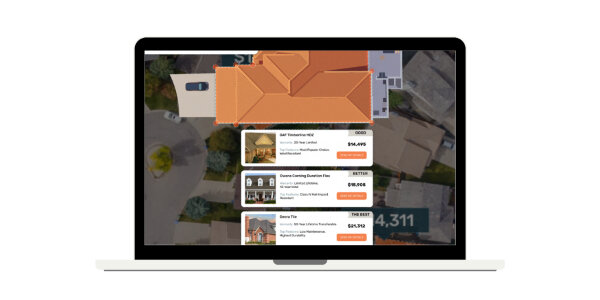Create an Accurate and Profitable Price for Every Roofing Job

By Sarah Smith, JobNimbus.
Knowing how to give your customers price estimates is key to both making a profit and acquiring customer trust.
One of the most important skills for all roofing professionals to have is the ability to provide accurate and profitable estimates to customers. Undervaluing your work or overpricing both have devastating effects to your business. The first could put you in situation where you lose money and the second could cause customers to turn to other contractors. Worse, you could lose clientele trust and weaken your reputation. Customers need to know that your job pricing is both accurate and not subject to change. Continue reading to better understand how to correctly price a roofing job and avoid uncomfortable or unprofitable situations in the future.
Measure and inspect the roof
The first thing you should do to understand what the job may cost, is to meet with the client and study their roof. Come prepared to ask the customer many questions, such as their budget, what type of shingles they want, are they working with an adjuster, have they called their insurance, etc. While inspecting the roof, look for damages or additional features that may raise the cost. We suggest you take photos of these to show your client and keep a record of in your CRM. You should be able to offer them more than one price estimate according to the different materials that you can use (Good, Better, Best).
After doing so, you must measure the roof to come up with the amount of squares you will need to install. This will be the majority of your roofing job cost, so make sure it is done correctly. When measuring, calculate the roof base length and width, the roof pitch, and the number of roof squares. Remember you have a ton of measurement companies out there to help you with this. You could choose a quick square count software or a more in-depth solution. Eagleview can produce a full measurement report, as well as, companies like HOVER, etc. Don’t tape a job anymore, it’s not worth your time or the liability with this incredible technology you have at your fingertips.
Estimate material, labor and overhead costs
Once you have a clear idea of what the roofing job is, you need to come up with the materials you need for the job and what those will cost. Different roofing materials vary in price, and depending on your supplier, you can pay upwards of $7.00 per square foot for an asphalt shingle roof. Also, don’t forget other roofing costs including nails, vents, flashing, tools, underlayment and more.
Next, you need to determine your labor costs. Look at how many hours your project is going to take and multiply it by the number of employees you’ll have working on the job. You can estimate this amount by tracking labor hours for previous jobs in your CRM. This calculation gives you your labor-hours, which you will then multiply by the hourly wage for your employees to give you a total labor cost.
After determining labor costs, you need to consider overhead costs for a roofing job. The price you charge for a roofing job must be able to cover these costs. Overhead costs for roofers may include whatever ongoing costs you have to operate your business, such as office rent, marketing, insurance and more. Calculate your overhead costs for a week and divide it by your weekly labor-hours to come up with the amount you need to charge per hour to cover overhead costs. You can use an overhead cost calculator to help you with this step.
Finally, add material costs, labor costs and overhead costs together to come up with a total roofing job cost.
Add your markup
Now that you know how much it costs to breakeven for the roofing job, you need to add your markup so that you can turn a profit. Your markup percentage depends on the profit margin you want to make on the roofing job. Your Profit Margin = (Net Income/Net Sales) * 100
Your markup percentage should be higher than your profit margin percentage.
Now that you know how to measure a roof correctly, estimate roofing costs and calculate a profit, you’re ready to create a professional quote for your customers and grow your business by doing what you do best.
Learn More About JobNimbus Roofing Software
Read, Listen or Watch on demand to learn more about starting to use software automation and how you can leverage technology to improve your business.
Original article source: JobNimbus






















Comments
Leave a Reply
Have an account? Login to leave a comment!
Sign In